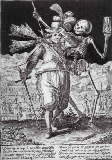In the September 1970 edition of California Medicine, a publication of the Western Journal of Medicine, an article entitled “A New Ethic for Medicine and Society” explained that the traditional western ethic has always placed great emphasis on the intrinsic worth and equal value of every human life regardless of its stage or condition.
This ethic has its roots in the Judeo-Christian tradition and has, in fact, provided the basis for most of our laws and much of our social policy. In this article, it was suggested that the Judeo-Christian ethic is being gradually eroded in order to validate the pragmatic solutions which would accommodate the expansion of social engineering. They also warned that in order for a dilution of this ethic to be successful, it would be necessary to separate the idea of killing from such acts as abortion and death control (assisted suicide and euthanasia).
The pro-life movement recognizes that while ethics can change, ethical morality is based on unchangeable principles, such as “you shall not kill.” Frequently, however, certain behaviour is referred to as being “ethical” because it appears to reflect the views of a majority of people at a particular time. This distinction makes it possible for an action to be termed ethical, although it is not actually “moral.”
The age-old moral parameters which advocate that every human life is sacred and should be equally protected continue to be the hallmark of the pro-life movement. We do not accept the premise that there is such a thing as a life devoid of value. In fact, we are acutely aware that once a society begins to accept the idea that killing a fellow human being is morally acceptable, every other member of that society becomes vulnerable.
Over the years a myth has been promoted that a dying person must submit to burdensome treatment, perhaps by unwanted medical treatment. Based on this misinformation, assisted suicide and euthanasia are now vigorously promoted as a palatable way to avoid a prolonged dying process. Patients, however, have always had the basic right to refuse unwanted medical treatment. In fact, a physician who ignores the wishes of a patient can be charged with assault.
Another myth is that pain cannot be controlled. Today, experts advise that almost all pain can be controlled by efficacious use of drugs. The 1995 Senate of Canada Report on Euthanasia and Assisted Suicide recommended that palliative care programs be given top priority and that greater emphasis be placed on training doctors and nurses on sound methods of pain control. The Senate Report also upheld the position that euthanasia and assisted suicide remain illegal, as did the courts in the well publicized 1993 Rodriguez case. The Supreme Court of Canada, however, ignored its own precedent in the Rodriguez case when in February 2015, it invalidated with its Carter decision, the prohibition on euthanasia and assisted suicide. In June 2016, Parliament passed Bill C-14 into law and euthanasia and assisted suicide are now legal in canada. Bill C-7, approved in the House of Commons in March 2021, further expands access to euthanasia.
Those advocating the legalization of euthanasia claim that safeguards can be legislated to prevent possible abuses. However, the Dutch government’s Remmelink Report in 1991 and the follow-up report in 1995 have shown that safeguards don’t work when power and control is given to doctors. The Remmelink Report made public the fact that 1,040 patients were killed without their knowledge or consent. A further 4,941 patients were given overdoses of pain medication without their consent, not for the primary purpose of relieving their pain but to hasten their death. In 1995 the number of patients killed without their knowledge or consent continued to be high – 900 deaths – a startling statistic in light of the fact that only 60{a886d2509afb02fdbd678c9c9cbef29e9b4ac8f1454580a0bf53ee67e764b753} of deaths by assisted suicide or euthanasia were being reported. This under reporting was in direct violation of their own safeguards. There is no reason to believe it would be any different in Canada.
The well publicized case of Tracy Latimer, a severely handicapped girl killed by her father in 1993, was a classic tragedy of non-voluntary euthanasia. One can truly understand the anguish of her parents; however, if we diminish the seriousness of this crime under the guise of compassion, we diminish not only Tracy’s life but the life of every person with disabilities perceived to be in intolerable pain. No one, not even a parent, has the right to determine whose life is worthy (or nor worthy) to be lived. Overturning Robert Latimer’s conviction or reducing the sentence under a created category of compassionate homicide would have set a dangerous precedent and threatened every one’s most basic right – the right to life.
Dr. Leo Alexander, Chief Counsel for War Crimes in the Nuremberg trials wrote in 1946 that it became evident to all who investigated these crimes that they had started from small beginnings: “The beginnings at first were merely a subtle shift in emphasis in the basic attitude of the physicians. It started with the acceptance of the attitude, basic in the euthanasia movement, that there is such a thing as a life not worthy to be lived. This attitude in its very early stages concerned itself merely with the severely and chronically sick. Gradually the sphere of those to be included in this category was enlarged to encompass the socially unproductive, the ideologically unwanted, the racially unwanted and, finally, all non-Germans.”
Historically, physicians have participated in killing on behalf of the state. If we allow care-givers or the medical profession the power to terminate their family members or patients by assisted suicide or euthanasia, or, to put it in plain language, if we allow care givers or the medical profession to intentionally kill, dying will not be a “right”, as some claim it to be, dying may become a “duty”.
Last modified November 2021
Action Life Online Article

